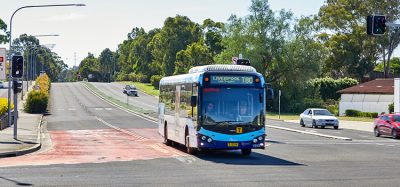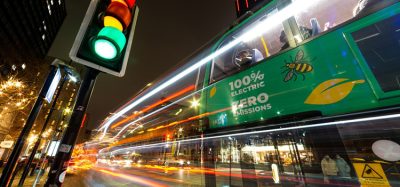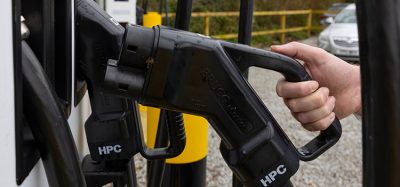Building for the future: why hyperloop could revolutionise public transport
- Like
- Digg
- Del
- Tumblr
- VKontakte
- Buffer
- Love This
- Odnoklassniki
- Meneame
- Blogger
- Amazon
- Yahoo Mail
- Gmail
- AOL
- Newsvine
- HackerNews
- Evernote
- MySpace
- Mail.ru
- Viadeo
- Line
- Comments
- Yummly
- SMS
- Viber
- Telegram
- Subscribe
- Skype
- Facebook Messenger
- Kakao
- LiveJournal
- Yammer
- Edgar
- Fintel
- Mix
- Instapaper
- Copy Link
Posted: 8 June 2021 | Joshua Minchin - Intelligent Transport | No comments yet
Virgin Hyperloop CEO Josh Giegel explains why hyperloop technology can change the way we travel forever, and reveals an increased receptiveness to the new mode of transport at a hearing he testified at last month.
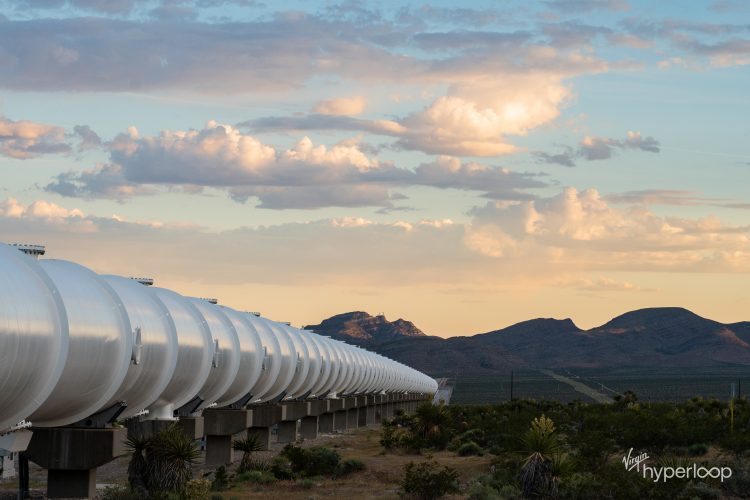

Giegel explains why hyperloop is cheaper to build and maintain than traditional high-speed rail networks Credit: Virgin Hyperloop
What effect do you think Hyperloop is going to have on transport networks in North America?
Josh Giegel: It’s a new form of transportation, a new form of connectivity and I think it’s going to do what the aeroplane and the railroad did for the US in the past. If you start to look at the infrastructure in the US and other parts of the world as well, it’s pretty old and getting to the point where it’s actually limiting productivity.
Having faster connections throughout time has enabled the creation of more growth and more opportunities for individuals.
Are we going to look at technology for the future, for the next 100 years, for the next millennium, or are we going to continue to reinvest in the past? If you think about that map of the railroad in 1860, it was just a couple of little spiders here and there – then it turned into this massive spider web. That’s the opportunity I think, in front of us here. To do that faster, more sustainably, and then ultimately providing a better level of service than other modes are able to right now – that’s what we ultimately hope can be achieved with the Virgin Hyperloop system.
Just how much will hyperloop revolutionise journey times in the US?
JG: You could travel from New York City to Washington DC in a little over 30 minutes – that’s faster than you can get across uptown Manhattan. In the Midwest, Kansas City and Saint Louis are about three and a half hours apart by car right now – that journey would be around 30 minutes. Those types of connections are bringing together cities that you really couldn’t reach in an afternoon trip, be back before dinner, leaving at lunch. It’s an opportunity to really connect, it’s taking a country that’s perhaps 5,000km across and making it feel like it might only be 1,000 or 2,000km across. Everything’s going to be a lot more connected, a lot more accessible, allowing people and goods to move a lot more freely.
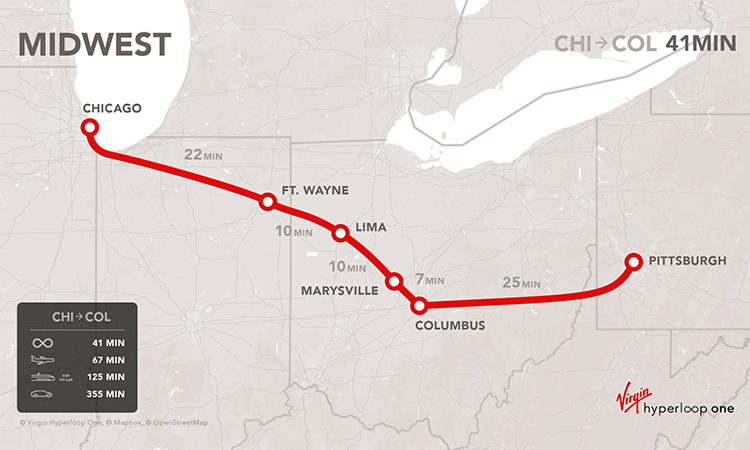

Journey times between big cities in the US could be drastically reduced with hyperloop Credit: Virgin Hyperloop
Do you ever see hyperloop being incorporated into city transport networks?
JG: I think so. I think the first instance would be something like the airport model right now. So, you’ve got about four airports around London, in Los Angeles the situation is similar. If you imagine being able to have three or four locations or portals around the city, that will allow you to leverage the existing transport networks to get you there, but with a much quicker connection between the two.
You could go in-between the airports around Los Angeles, or you could go all the way up to San Francisco from the same area. The exact same vehicle that can do these shorter trips, would also do the longer ones. There would be more frequent routes that would go across town, but at the same time, you could get at any of those particular portals and in those particular locations, you would be able to get to your final destination perhaps without having to transfer.
How do you ensure hyperloop remains accessible to all and can compete with the price of a train ticket?
JG: The cost question is one we get to probably third-most frequently, behind “Is it safe?” and “Is there a bathroom on hyperloop?”. Let’s look at the total cost of the system – how much it costs to build, how much it costs to operate, and ultimately how much it costs to maintain. In terms of the total life cycle, that’s the area where Hyperloop actually is significantly better.
From a cost standpoint, to actually construct the network, we can do things quite a bit differently than high-speed rail. If you think about high-speed rail, particularly in Europe, where it’s so ubiquitous, you have big rights of way. You have an area maybe 50 or 100 metres wide with fences and other things that block access. We can fit into a much smaller right of way. We can climb steeper hills, much cheaper than high-speed rail. We can take tighter turns because we’re inside a tube and we can bank a lot higher. We can have smaller diameter tunnels, we can have smaller stations and all of those things drive the capital cost of the project down and provide an opportunity to fit into more locations.
For example, there’s a couple of projects that we looked at where there’s one or two connections that high-speed rail could actually make, and Hyperloop could take five or six different paths and do it a lot faster than high-speed rail. That gives you more flexibility to drive the cost of land acquisition down, and the cost of right of way down.
The second aspect is the operating cost. We’re inside a tube, we don’t have weather related delays or weather related maintenance. We have very little energy thanks to the little air inside the tube, and that allows us to travel at the speed of a plane for a fraction of the energy consumption. We have no frictional surfaces, no steel wheels grinding and steel rail – nothing that gets hot. Those things that wear out and burn out, we ultimately don’t have in our systems.
You’re looking at something that takes less land, is easier to fit into a variety of areas, runs at a reduced total cost, including reduced operating and maintenance costs. All of this means that you’d be able to deploy the system for a ticket price that’s not much different to what you’re paying for rail today. Except, you’re being able to go at the speed of an aircraft with very little wait time, directly to your destination.
As one of the first people to travel via hyperloop, how was the experience?
JG: It was incredible in every possible way that you could imagine! It was satisfying to have started the company a little over six and a half years ago, to then be sitting inside of that idea, to be riding in it and to have a team that went in and was responsible for making sure that Sarah and I were safe. To have done all that in this pretty bad year of 2020 was even better!
The test itself was a shorter test – we got up to about 170-180km an hour. We accelerated about 0.6 to 0.7Gs, which is equivalent to a sports car.
It was very interesting to have Sara Luchian in the vehicle with me, because she is our Director of Passenger Experience. We were talking about the things we liked, such as how inviting it was for people to get in. If you look at the videos it’s spacious, it’s bright inside and it’s all the things that we want in a vehicle to invite people into a new mode of transportation.
On the flip side, being an engineer, I knew all the different things, all the different safety parts that go into the system and Sara did not. She really represented the average passenger, because most people don’t know how an aeroplane works, but they still get on one. That really was a refreshing dichotomy to be going through the experience with her, seeing the journey through her eyes and establishing the things that made sense and what we want to do in the passenger experience as we go forward.
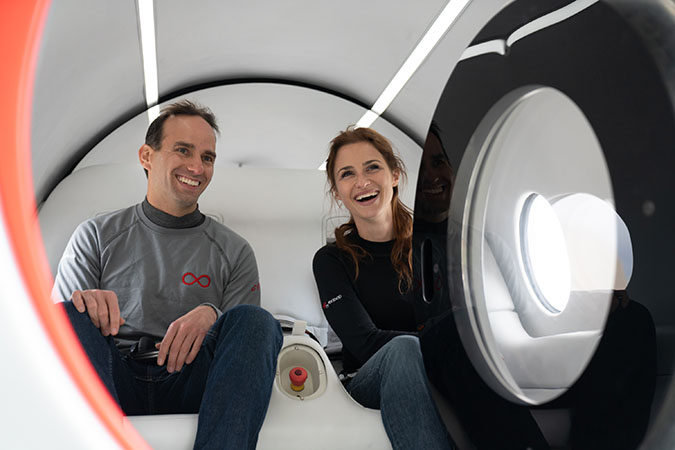

Josh Giegel and Sara Luchian became the first humans on earth to travel via Hyperloop. Credit: Virgin Hyperloop
How far away are we form seeing hyperloop being made reality?
JG: Over the last kind of six years, we’ve gone from a garage to where we’re at today. That culminated in November of last year with two passenger pod test. That was the official kickoff of what I would call the decade of Hyperloop. It starts off with two people riding it, and it’s going to end with hundreds of millions of people riding it. In-between, we’re going from the two passenger vehicle to the 28 passenger vehicle you saw in the passenger experience video, which we’re building right now.
Around the middle part of this decade, you’ll start to see those systems become safety approved for passenger use. That will really be the spot where you can start building out projects in the US and around the world. Depending upon the length and location of those projects, you could see some of those coming online in the last couple of years of this decade.
Why should countries and governments fund a Hyperloop system over a new rail system or other improvements to the transport infrastructure?
JG: That’s a question that a lot of countries are facing right now. Two weeks ago now I testified at the Transportation and Infrastructure group in the US Senate. That was one of the questions that came up and really the opportunity here is how are we going to start connecting people as we move forward.
The railroad and the car have brought 20th century productivity, but our lives are changing, demands are changing and we can’t expect a lot of those solutions to meet the needs and challenges of today and things that we care about. There is also the push – and I think it’s a very, very welcome push – for sustainability.
When you look at the opportunities in front of us today, you could say we’re at the end of the learning curve for high-speed rail. Rail has been around for almost 200 years. We’ve done a lot to reduce the cost and improve efficiency and we’re pretty much at those last little incremental things that we can do better. Yet here we are, a company that’s not even 10 years old, and we’re able to be at parity in terms of costs, but with upsides such as the significantly reduced travel time, the significant environmental footprint, the reduced ecological footprint from having smaller right of ways and all those things. If a government had to make a choice they’d say “we’re going to invest in something that’s going to set us up, not for this year, but for the next hundred years.”
What are the things that matter? I think it’s going to be speed, I think it’s going to be time, I think it’s going to be emissions and it’s going to be electric and autonomous. Those are all things that hyperloop is. I think the better and quicker we’re able to demonstrate them now, the sooner that people will be able to start adopting them into the systems that they’re building now for the next 100 years.
What was the reception like at the US senate? Are governments ready to embrace hyperloop?
JG: The response we’ve had over the last two and a half years, three years with the US government is very, very positive. They’ve been very interested in the technology, they like the fact that we’re doing this, developing the technology privately. We’re not asking for government assistance. The hearing that we had last week, I thought, was really good.
Receptiveness has been really, really high. They also codified a couple of things and allowed us to have a regulatory home. Our big ask in this particular meeting was that we’d be eligible for the same type of government loan programmes that normal infrastructure projects are entitled to, which is a big thing. We’ve come a long way from being kind of this scrappy little crazy idea to something that’s now being established and being considered.
The view from pretty much everybody I’ve talked to is “yeah, let’s do it” and “what can we do to make it go faster?”, “How can we help?” I’ve been nothing short of shocked at how fast they’ve been able to move on something that’s pretty transformative and such a new technology.
Do you have plans to expand outside of the US too?
JG: It’s moving pretty rapidly everywhere. We’ve met a lot with representatives from the EU – in Brussels, they have a working groups that look at hyperloop technology, and the same goes for the Middle East and India. These governments have responded very quickly to stand up organisations that are there to support us and make sure we are able to deploy the technology safely.
The groups are seeing technology move at an incredible pace. And they’re realising if they can’t move significantly faster than they’ve done in the past, this is just going to get away from them. They’ve been a lot more upbeat, the people that we’ve engaged have not been those kind of stereotypical stodgy, government bureaucrats, but real progressive thinkers about what it is going to take to advance this new piece of technology.
Biography


Giegel founded the company in 2014, when hyperloop was an idea drawn on a whiteboard in a garage. Previously, at SpaceX, Josh developed the world’s first reusable rockets and led the successful testing of six different rocket engines.
Josh received an MS in Mechanical Engineering from Stanford University where he was a Graduate Engineering Fellow. He holds a BSME from Penn State University where he graduated with honors and was first in his class.
Related topics
Air Quality, Alternative Power, Infrastructure & Urban Planning, Journey Planning, Passenger Accessibility, Passenger Experience, Public Transport, Transport Governance & Policy, Vehicle & Passenger Safety
Related modes
Hyperloop
Related cities
USA
Related organisations
Virgin Hyperloop
Related people
Josh Giegel





